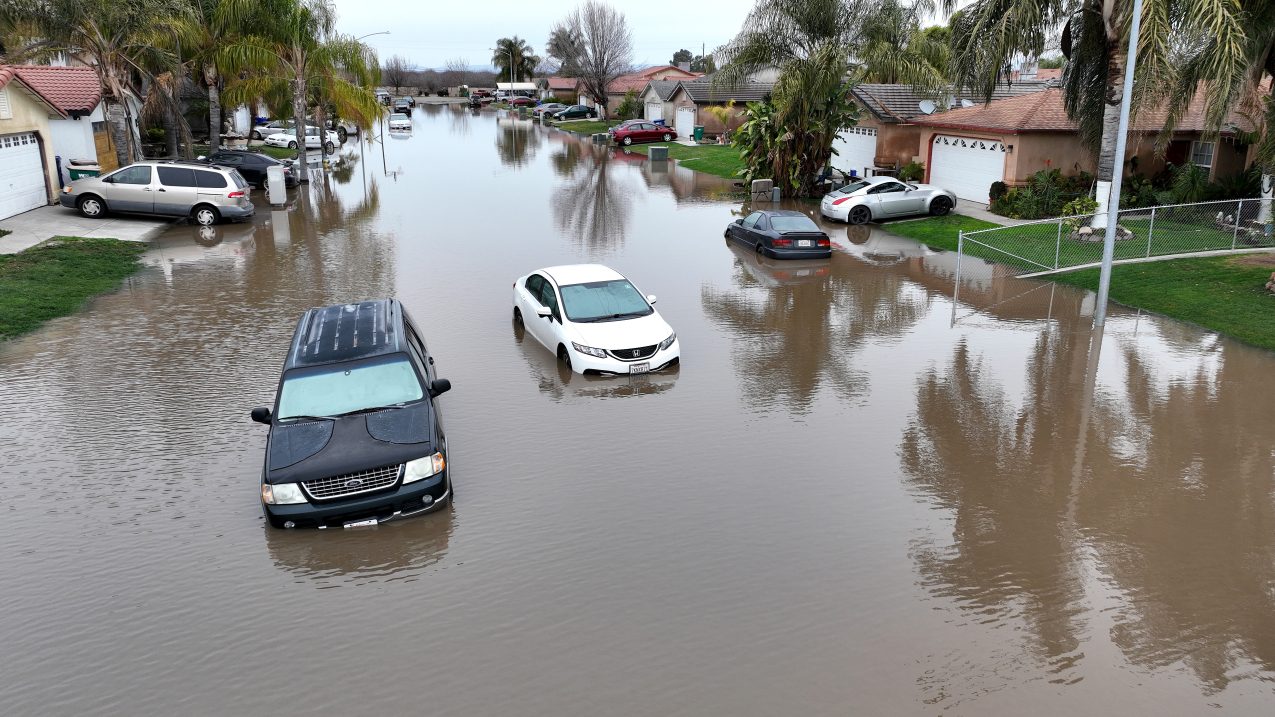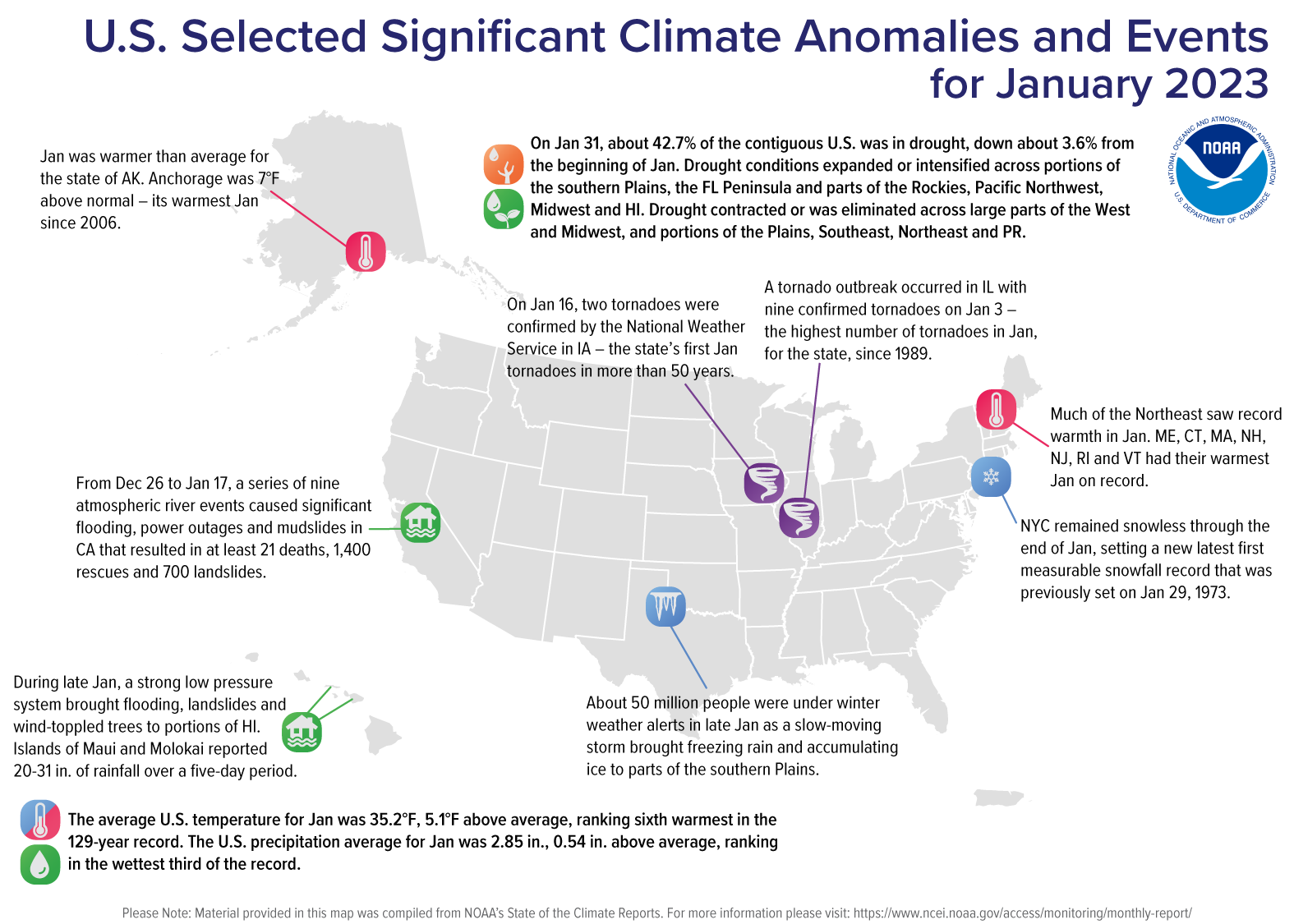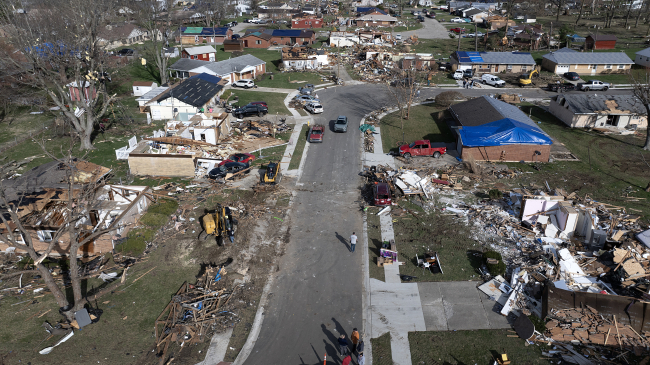Month marked by atmospheric rivers, numerous tornadoes

Cars in floodwaters on January 11, 2023, in Planada, California, after the town was devastated by widespread flooding following a severe atmospheric river event. A series of nine atmospheric rivers dumped a record amount of rain and mountain snow across parts of the western U.S. from late December into mid-January, hitting California particularly hard. (Image credit: Justin Sullivan/Getty Images)
The new year started off on a very warm note across the U.S., with the nation seeing its sixth-warmest January on record, according to scientists from NOAA’s National Centers for Environmental Information (NCEI).
The month was also plagued by a series of atmospheric rivers that brought historic rainfall and snow to the West, as numerous tornadoes struck other parts of the country.
Below are highlights from NOAA’s U.S. climate report for January 2023:
Climate by the numbers
January 2023
The average January temperature across the contiguous U.S. was 35.2 degrees F (5.1 degrees above average), ranking as the sixth-warmest January on record.
Connecticut, Maine, Massachusetts, New Hampshire, New Jersey, Rhode Island and Vermont each had their warmest Januaries on record. Indiana, New York and Pennsylvania saw their second-warmest Januaries on record, with 17 additional states experiencing a top-10 warmest January.
The nation’s average precipitation across the contiguous U.S was 2.85 inches (0.54 of an inch above average), ranking among the wettest third of Januaries on record.
Nebraska saw its third-wettest January on record, with Massachusetts ranking fourth wettest and Rhode Island ranking seventh. Colorado, Iowa, New Hampshire and Utah each had a top-10 wettest January on record.

Other notable climate events
- Atmospheric rivers dropped record rain and snow: A series of nine atmospheric rivers from late December into mid-January dumped a record amount of rain and mountain snow across parts of the western U.S., hitting California particularly hard and causing significant damage to the region, including power outages. The weeks-long deluge resulted in at least 21 deaths and prompted more than 1,400 rescues throughout the state. The San Francisco Bay area experienced its wettest three-week period in 161 years.
- A busy month for tornadoes: January was notable for several weather systems that brought severe thunderstorms and an unusually high number of tornadoes to portions of the U.S.. More than 100 tornadoes were confirmed, marking the third time since 1950 where 100 tornadoes occurred during January.
- January 2-4: A tornado outbreak occurred across portions of the southern Plains, Southeast and Illinois, where 61 tornadoes were confirmed by NOAA’s National Weather Service. The storms also brought severe thunderstorms, hail and significant damage to the region.
- January 12: Severe storms and tornadoes swept through parts of the Midwest and Southeast. This outbreak included 69 confirmed tornadoes, including two EF-3 tornadoes.
- January 16: Two tornadoes were confirmed in Iowa – the state’s first instances of January tornadoes since 1967.
- Drought conditions improved overall: According to the January 31 U.S. Drought Monitor report offsite link, about 42.7% of the contiguous U.S. was in drought, down about 3.6% from the beginning of January.
Drought conditions expanded or intensified across portions of the southern Plains, the Florida Peninsula and parts of the Rockies, Pacific Northwest, Midwest and Hawaii. Drought conditions improved across large parts of the West and Midwest, and portions of the Plains, Great Lakes, Southeast, Northeast and Puerto Rico.
More > Access NOAA’s November climate report and download the images.



